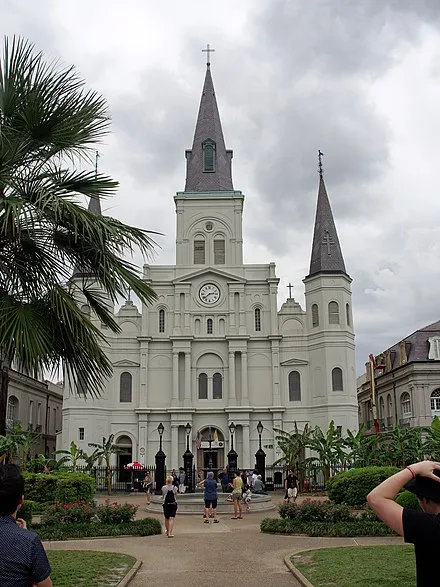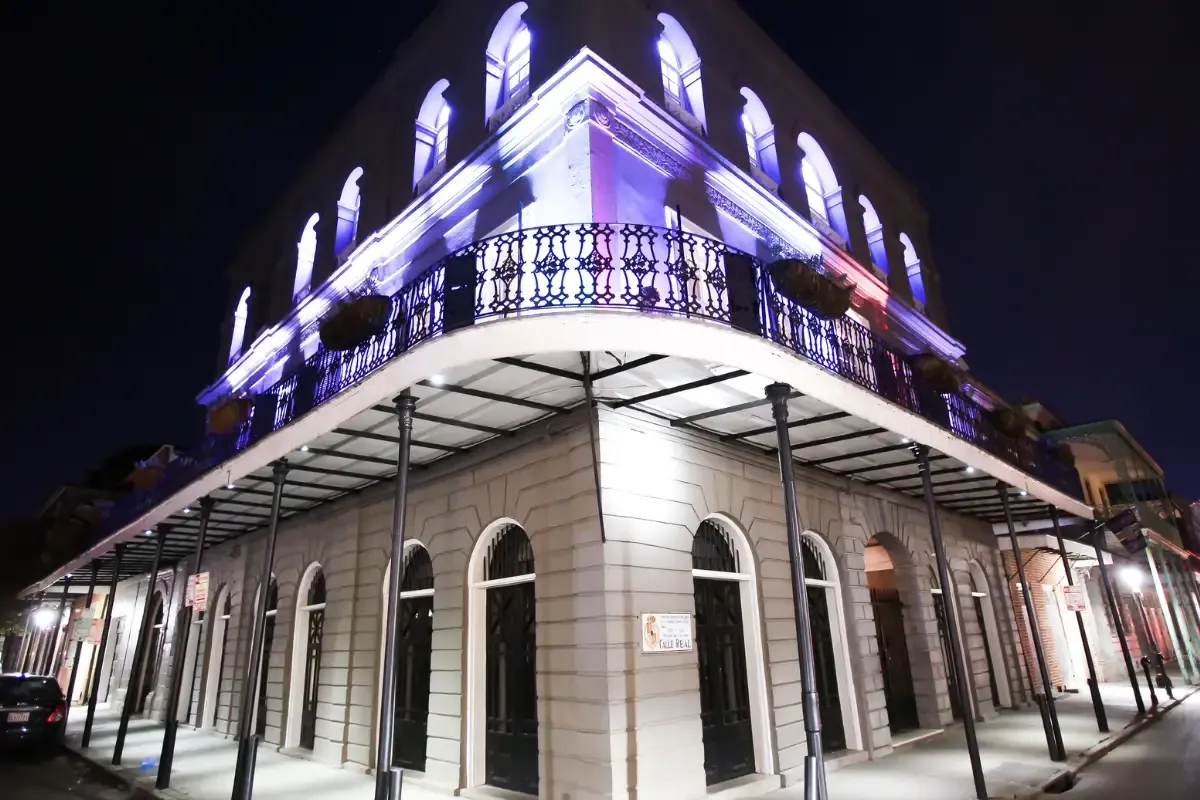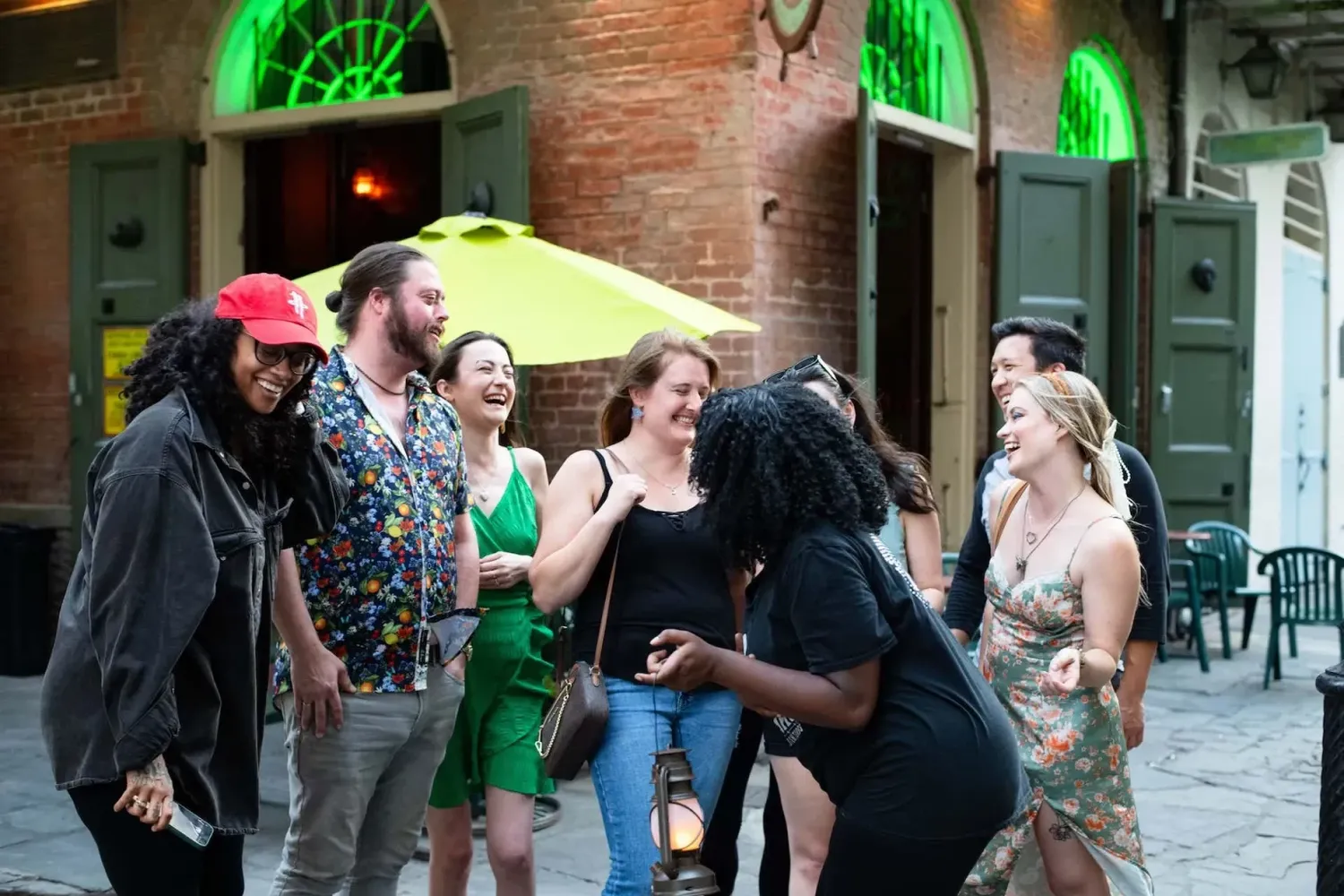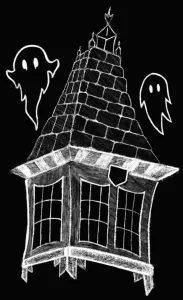Spookt's Guide toHaunted New Orleans
A city of culture, history, resilience...and occasional ghosts!



Some basic facts
New Orleans, founded in the early 1700s by the French, is one of the most culturally distinct cities in the U.S. It is situated along the Mississippi River, and in 1803, the U.S. acquired it through the Louisiana Purchase. Its strategic location made it a major port city, heavily involved in trade, including the slave trade.
Known for its unique blend of French, Spanish, African, and Creole cultures, New Orleans has a rich history of music, food, and festivals. It’s the birthplace of jazz, with legends like Louis Armstrong emerging from its vibrant musical scene. The city is famous for Mardi Gras, its historic French Quarter, and distinctive Creole and Cajun cuisine, including gumbo and beignets.
The city also has a reputation for the supernatural, with its above-ground cemeteries, Voodoo traditions, and ghost stories, and despite challenges like Hurricane Katrina in 2005, The Big Easy, the Crescent City, the Paris of the South, NOLA, no matter what you call it, New Orleans remains a resilient and diverse cultural hub that draws visitors from around the world.
Why is New Orleans haunted?
New Orleans is a city where the echoes of its haunted past linger in the shadows. With its age, aboveground cemeteries, voodoo priestesses, a history of cholera and yellow fever outbreaks, enslavement, fires, and floods—it’s not surprising that the Crescent City is known for being one of the most haunted cities in the United States.
Age
We all know that New Orleans is old. The city was founded in the spring of 1718 by Jean-Baptiste Le Moyne de Bienville. Its traditional anniversary is celebrated on May 7, but the actual day of founding is unknown. That makes it over 100 years old. Imagine how many stories a 100 year old person would have to share with us. The Big Easy undoubtedly has tens of thousands of tales to tell.
Cemeteries
The custom of above-ground burial in New Orleans is a mixture of folklore and fact. It is often cited that the reasoning behind above-ground burial is due to the city’s high water table. Between 1724 and 1789, the dead were buried in the usual way, which is below the ground, however, the graves were often washed away. Dead bodies were often discovered in the years that followed, with workmen finding 32 graves while they were building condos. (Source)
New Orleans' first formal cemetery, the St. Peter Street Cemetery, was located in what is now the French Quarter. According to accounts of the time, all deceased were buried in the ground. Accounts of the time also stated that when graves were dug, they frequently filled up with water, resulting in watery graves.
As St. Peter Street Cemetery approached capacity, city officials decided to establish St. Louis Cemetery No. 1. At that time, Esteban Miro, the governor of New Orleans, was loyal to Spain. So, when the St. Louis Cemetery was created, the above-ground wall vault system, which was fashionable in Spain, was implemented in New Orleans. (Source)
These historic cemeteries, often called “Cities of the Dead”, with their crypts and mausoleums, have become hotspots for ghost stories, with tales of spirits wandering among the graves.
Spookt Tip: If you want to read more about above-ground burial and its architecture, pick up Going Out in Style: The Architecture of Eternity by Douglas Keister. The book takes readers to New Orleans, among many other cities, revealing the history behind mausoleums and other above ground burial structures.
Voodoo
New Orleans has a long connection with voodoo, a spiritual practice with West African, Haitian, and Catholic influences. The city is home to famous voodoo figures like Marie Laveau, whose tomb is a popular site for both reverence and ghost stories.
In the book, Voodoo in New Orleans, the author, Robert Tallant, documents a voodoo ceremony: “Near the spot where Bayou Tchoupitoulas met Lake Pontchartrain, about three hundred people, including Marie Laveau, the Voodoo Queen, had set up a cauldron. Into it were placed water, black pepper, a snake cut into three pieces, a cat whose throat Marie Laveau personally slit, and a live black rooster. All the while, singing and chanting filled the air. Then everyone disrobed while Marie Laveau put powders into the pot and conducted secret rites. At twelve o’clock all hands raced into the lake. Later there was more singing, dancing, eating, drinking and “recreation” in the bushes. The ceremony closed with a sermon by Marie Laveau and a prayer of benediction”.
It’s reasonably understandable that voodoo rituals, potions, and spiritualism have fueled ghost lore in New Orleans.
Epidemics and Pandemics
Largely due to its hot, humid climate, poor sanitation, and role as a major port city, New Orleans experienced devastating outbreaks of both cholera and yellow fever. These outbreaks caused widespread death and significantly shaped the city’s history and development.
Cholera is a bacterial infection that affects the intestines, typically caused by consuming contaminated water or food. During the 19th century, cholera was a major public health crisis in New Orleans, particularly because of poor water quality, unsanitary living conditions, and the constant influx of people and goods. New Orleans was especially hard hit, losing more than 17,000 people across the periods of outbreaks. Although not as frequent as yellow fever outbreaks, cholera in Louisiana was deadly and disruptive. (Source)
Yellow fever, a viral disease transmitted by mosquitoes, was even more infamous in New Orleans. More than 41,000 people died from the scourge of yellow fever in New Orleans between the years 1817 and 1905 (Source). In fact, one of the deadliest yellow fever epidemics occurred in 1853, when an estimated 8,000–12,000 people died in New Orleans within just a few months. This was the worst outbreak in the city's history, killing nearly 10% of the population. The city's humid, swampy environment, and lack of knowledge about mosquito transmission contributed to the high death toll.
The cholera and yellow fever outbreaks in New Orleans contributed significantly to the city’s haunted reputation. The mass deaths, particularly from yellow fever, and the suffering that followed these epidemics left a deep imprint on the collective psyche of the city, fostering ghost stories, tales of restless spirits, and a supernatural atmosphere.
Slavery
Slavery in New Orleans dates back to its founding in 1718, when the city was a French colonial outpost. The French imported enslaved Africans through the transatlantic slave trade, using them primarily to work on plantations producing sugar and indigo, which were key to the economy of the Louisiana colony. By the early 19th century, New Orleans had become one of the largest slave markets in the United States. Enslaved Africans were shipped from the Upper South and sold in the city's bustling markets to work on sugar and cotton plantations throughout Louisiana and Mississippi.
Enslaved people in New Orleans endured severe physical and emotional abuse, forced labor, and inhumane conditions. Many were subjected to violence, mistreatment, and death at the hands of their enslavers. Madame Delphine MacCarthy Lalaurie was a wealthy New Orleans socialite and notorious enslaver who was known for her gross mistreatment of her enslaved people.
Many slaves passed through New Orleans on their way to plantations across the south, entering a slave trade that Solomon Northup described in brutal detail in his memoir Twelve Years a Slave, which later became an Oscar-winning movie. Northup was a free-born African-American who was kidnapped in Washington, DC, shipped to New Orleans, and sold at auction. (Source)
Slavery left a deep and enduring scar on New Orleans, and its legacy is deeply intertwined with the city’s haunted history. The suffering endured by enslaved people, the violence and death they experienced, and the spiritual practices they engaged in have all contributed to the stories of restless spirits and haunted locations.
Natural Disasters
Both floods and fires have caused widespread destruction and loss of life in New Orleans. Major disasters, such as the Great Fires of 1788 and 1794, as well as the catastrophic floods from hurricanes and river overflows, resulted in countless deaths. Many historic homes and neighborhoods were destroyed by fires and floods, leading to the abandonment of sites where traumatic events occurred. The spirits of those who perished tragically often linger, contributing to the city’s haunted reputation. In essence, the interplay of floods and fires in New Orleans has not only shaped its physical landscape but also contributed to its rich tapestry of haunted history, where the echoes of tragedy continue to resonate through the stories and spirits that inhabit the city.
These are just some of the factors intertwine to create a city steeped in mystery and legend, where the past continues to haunt the present. New Orleans’ unique combination of history, culture, and the supernatural ensures that its haunted reputation endures, captivating locals and tourists alike.

